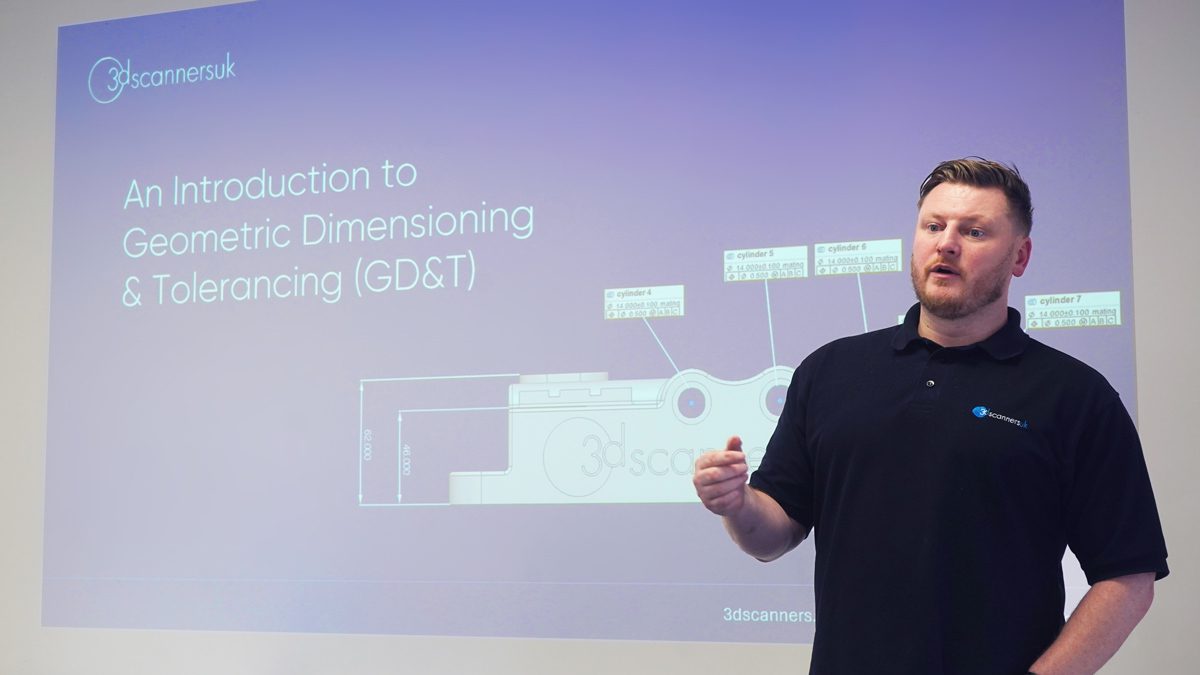
Click Here To Register
Date: Thursday 24th October
Duration: 09:00 - 16:30
Cost Per Person: £300 + VAT
Location: Online (Microsoft Teams)
Training Agenda
Our GD&T training courses are meticulously designed to cover all essential aspects. The agenda includes:
Drawing Interpretation:
Understanding engineering drawings is the foundation of GD&T. This module focuses on interpreting the various symbols and annotations used in technical drawings, enabling participants to read and understand complex geometrical specifications accurately.
The History of GD&T and Industrial Requirements:
This module provides an overview of the evolution of GD&T, tracing its origins and development over the years. Participants will learn about the industrial requirements that led to the creation of GD&T and its significance in modern manufacturing.
Datums and Terminology:
Datums are the reference points from which measurements are made. This module covers the terminology and concepts related to datums, ensuring participants understand the differences between datums, datum features and datum simulators.
Tolerance Types:
Tolerance specifies the allowable variations in part dimensions. This module introduces the different types of tolerances used in engineering including but not limited to: equally disposed bi-lateral, unequally disposed bi-lateral and unilateral tolerances.
Standards:
GD&T is governed by international standards, such as ASME Y14.5 and ISO 1101. This module familiarises participants with these standards, ensuring they can apply GD&T principles in compliance with global industry practices.
Geometric Characteristics:
This module delves into the specific geometric characteristics defined by GD&T, such as flatness, roundness, cylindricity, and perpendicularity. Participants will learn how to specify and measure these characteristics to ensure parts meet design requirements.
GD&T Symbols:
The core of GD&T lies in its symbols. This module provides a comprehensive overview of all GD&T symbols, explaining their meanings and how to use them effectively in engineering drawings.
Click Here To Register

Learning Outcomes
By the end of our GD&T training courses, participants will achieve the following learning outcomes:
Describe the Tolerance Zone for Each GD&T Symbol:
Participants will be able to accurately describe the tolerance zone for each GD&T symbol, ensuring they can specify and interpret allowable variations in part geometry.
Recognise Correct Formatting for Reference Frames:
Understanding the correct formatting for reference frames is crucial for accurate measurements. Participants will learn how to recognise and use correct formatting, ensuring precise communication of design intent.
Understand and Use Correct Terminology in Relation to Datums:
Correct terminology is essential for clear communication. Participants will gain a thorough understanding of datum-related terminology, enabling them to establish and use datums effectively in their designs.
Correctly Apply Commonly Used Modifiers Including MMC and LMC:
Modifiers like Maximum Material Condition (MMC) and Least Material Condition (LMC) play a critical role in GD&T. Participants will learn how to apply these modifiers correctly, ensuring parts are manufactured within acceptable limits of variation.
Describe How Geometric Tolerances Could Be Measured:
Measuring geometric tolerances is key to verifying part quality. Participants will learn various methods for measuring geometric tolerances, ensuring they can assess parts accurately and reliably.
Click Here To Register

Why Choose Our GD&T Courses?
Our training is interactive and practical, with hands-on exercises and real-world examples that help participants apply their learning to actual engineering challenges. We also provide flexible training options, including in-person and online courses, to accommodate the diverse needs of our clients.
By choosing our GD&T courses, you will gain the knowledge and skills needed to improve the quality and efficiency of your manufacturing processes. Whether you are a designer, engineer, or quality control professional, our courses will equip you with the tools and techniques to use GD&T effectively, ensuring your parts meet the highest standards of quality and performance.